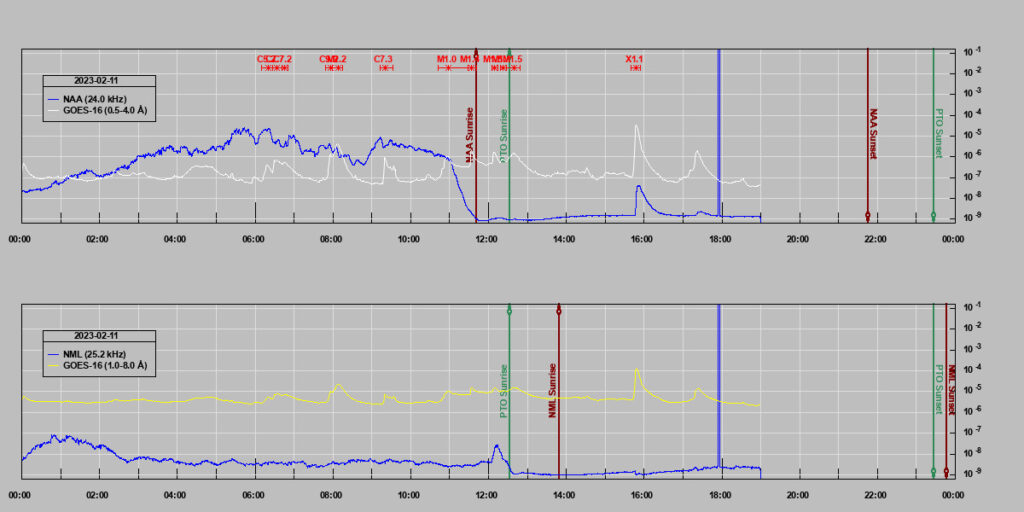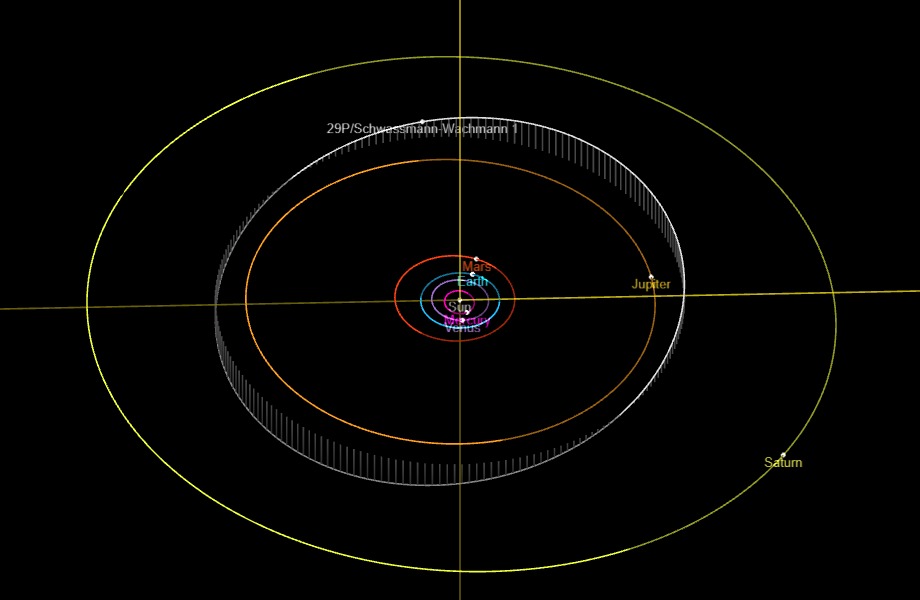The meteor camera captured this last night (10 Aug). Several local observers reported hearing a sonic boom after watching the object streak across the sky. As can be seen, it ultimately broke into pieces. Speculation is the object was launch debris from SpaceX’s recent Starlink launch.
It looks like I got the SID detector remounted just in time. The Sun is coming out of a long, low solar minimum. It is now starting to show an increasing level of activity as evidenced by the number of sunspots starting to show up in the Sun’s photosphere.
I originally installed the observatory’s SID detector at the end of 2018 just as solar cycle 24 was winding down. Even at cycle 24’s maximum, the sunspot count was noticeably low with an even lower count of flares. There was some activity but none that effected the ionosphere enough that my equipment noticed any changes. Then at the end of 2020 I had to take the detector offline due to renovations in the observatory office.
With the solar activity finally starting to increase, I made the effort to finish the reinstallation of the SID equipment. This involved moving the antenna outside and dealing with the complications of routing the cables into the office. I finished that effort on the 17th of January. Even with the number of sunspots and associated flares climbing I still didn’t see any response from my equipment. That changed this past week. There was an M class flare on the 8th that just bumped up the signal I was monitoring. Today however, was the first X class flare that I noticed since I originally installed the equipment.
The upper half of the chart shows data reported by the GOES 16 spacecraft as a white line. The same chart shows the signal received by the PTO from the Navy’s NAA VLF transmitter as a blue line. As you can see, even though this was a minimal X class flare (1.1), the impact on the strength of the transmission received immediately increased. A subsequent M class flare resulted in a proportionally smaller increase.
The sunspot count anticipated for cycle 25 is already ahead of prediction. Cycle 25 may be one to pay close attention to. The SID detector data is available using the Observatory->Solar Conditions menu.
Comet 29P is known for its periodic outbursts. It grabbed earth-based astronomer’s attention again on the 22nd of November. On average, the comet brightens 7.3 times per year. Normally, the comet’s magnitude is around 16.0 but current measurements show the comet at 12.2. Remember, the lower the number, the brighter the object. This image shows the characteristic ‘notch’ in the comet’s coma and close examination shows a slight, barely visible twist in it.
Because its orbit lies entirely between Jupiter and Saturn, it is classified as a Centaur object. Its year is 14.7 earth years long and currently lies above the ecliptic. The nucleus of the comet is estimated to be roughly 60 km (37 mi) in diameter.
As of the 2nd of December, the comet is visible in the constellation Gemini. It rises around 1830, transits the meridian at 0155 and sets well after sunrise at 0914.
Also visible top-center in the first image is an excellent example of how sensitive modern CCD chips are.
The tracks visible are attributed high energy particles impacting the chip. Straight tracks are expected from cosmic rays or muons created by cosmic rays hitting atoms in our atmosphere. Curved tracks, known as worms, indicate somewhat less energetic particles thought to be generated by “Compton scattering” due to emissions by physical components in the immediate area of the chip. Some glass formulae (e.g. BK7) are notorious for this. However, the proximity, directionality and time constraints of this image could indicate that the straight and curved tracks are related to the same event.
As mentioned in a previous post, at the request of Davis Instruments, I attempted to update the firmware on my weather station receiver. It did not go well. I have not been able to get computer access to the station’s data since February. Technical support ultimately said to call and arrange repair, but I was able to find a third party that manufactures a replacement part and that arrived yesterday afternoon.
It took a couple of tries to get it connected but it finally did. Immediately, the support software saw the receiver and started updating all the data consumers. That includes Weather Underground. The support software also handles uploading numerous files to the observatory webpage which means pages such as the “Most Recent Image” are now updating.
The only remaining problem is the weather receiver, located in the dome room, no longer accurately reports the interior temperature. I can live with that.
You might have noticed that some of the weather data has not updated for a couple of days. That is due to me closely following instructions from Davis Instruments to update the firmware in the Ethernet interface of the weather receiver. The upgrade procedure ran about 1/3 of the way to completion and then ‘failed on page 256’. There is no way to roll back the ‘update’ so the receiver sits on the shelf.
I sent an email to the support address for Davis Instruments and fairly quickly received a response saying a problem ticket had been created. However, I’m not confident in a quick solution. The email stated that response time may be a little delayed “During this holiday season…”. It is now mid February.
The weather station is still fine and reports to my local console, but right now there is no way to get the data transferred to the computer and thus to the PTO web page. Without the ability to get the data into the observatory systems, a working weather station is pretty much useless.
So, please bear with me until either a fix is provided by Davis or I have to purchase a new receiver interface.



